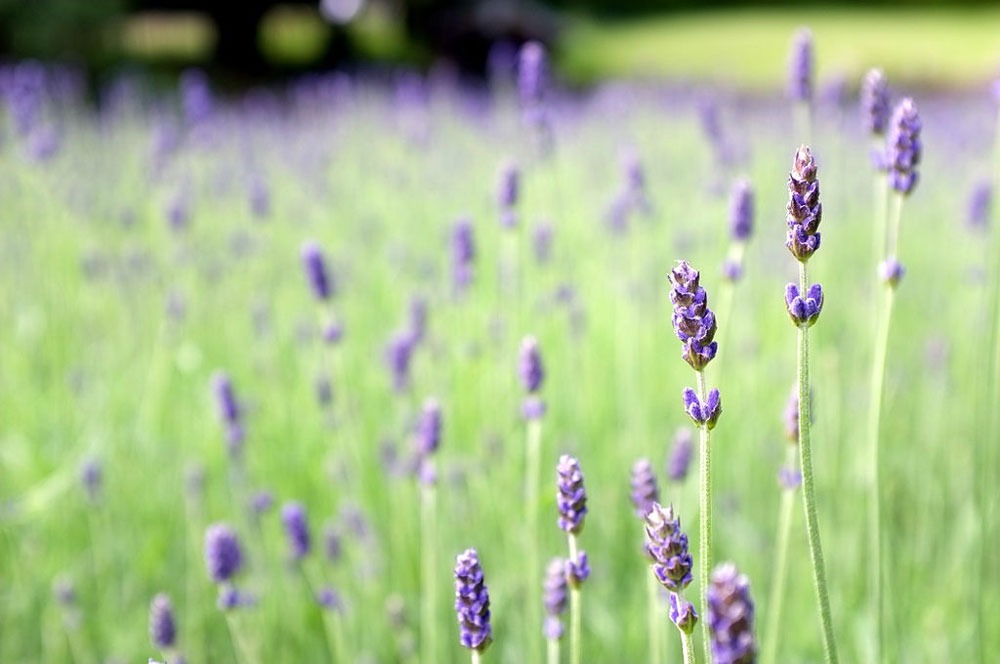
June 24, 2019, Roadtrippers
Eight hundred yards from Manhattan and the homes of 1.7 million people sits Governors Island, 172 acres with a long history. Now, alongside decommissioned military buildings that go back to the Civil War and its prisoners, sits the only large field of lavender in the five boroughs of New York City.
The island, lacking many full-time residents, and its historic buildings are stewarded by organizations: the Trust for Governors Island, the National Park Service, the Friends of Governors Island, and Earth Matter. The Trust oversees operations and planning for development, with a 13-member board appointed by the mayor of New York City. The National Park Service is responsible for 22 acres that were declared the Governors Island National Monument. The Friends group is a nonprofit charged with fundraising and working as a partner with the park service and the Trust. And, the nonprofit Earth Matter is working on the island’s natural environment, with a population of chickens, rabbits, bees, and worms that are yearlong residents.
Among its programs, Earth Matter runs a compost learning center and the Soil Start Farm within sight of the empty, decaying buildings. The island, once home to the country’s first incinerator, has been evolving in the last few years, often with volunteer labor, and now includes the lavender garden and manicured hills.
While the city’s plan is to make the mostly car-free island more of a resort—a destination for tourists, with a luxury hotel, a Jazz Age Lawn Party and a “glamping” site—Earth Matter encourages visitors to smell the lavender. Hollis Hillhouse, who has volunteered for Earth Matter for ten years, was pulled in by the gardens. “It was the island that sucked me in,” she said. “The island seduced me.”
Sign up for our free newsletters
Subscribe to NPQ's newsletters to have our top stories delivered directly to your inbox.
By signing up, you agree to our privacy policy and terms of use, and to receive messages from NPQ and our partners.
The goal is to make the island zero waste, or “as closed to a closed loop as we can achieve.” Hillhouse explains. The mission of Earth Matter, an $800,000 organization formed in 2009, is all about compost and altering the waste stream away from landfills. About 70 chickens eat food scraps and generate fertilizer, and active composting is used on the island’s landscape. A pair of baby goats has been borrowed for the summer to chomp on unmanicured sections and eat food scraps and produce fertilizer just like the chickens.
“How many people can say ‘I harvested lavender’ or ‘I walked some goats today,’” asked Hillhouse. She adds, “It’s quite healing.”
Earth Matter’s contribution to the Billion Oyster Project also demonstrates environmental responsibility in its attempts to bring once-thriving oysters back to New York waters. Shells are collected from restaurants, cured for a year, and seeded with larvae to be placed in reef restorations. The paths between the lavender rows are covered with broken oyster shells.
Besides being a pleasant place for people, bees, and butterflies to visit, the lavender field of over 500 plants has also become an income stream. Bouquets and sachets of dried lavender are sold at the welcome center. Once the plants are harvested and fully dried on racks, the lovely scent remains. There is no shortage of volunteers, either; they are encouraged to make a $10 donation for the pleasure of hard work harvesting.
Working with the city, the organizations have a similar goal in the rejuvenation of the moldering infrastructure of the island and a healthier future. Zero waste would be a definite plus. And taking baby goats for a walk is another.—Marian Conway













